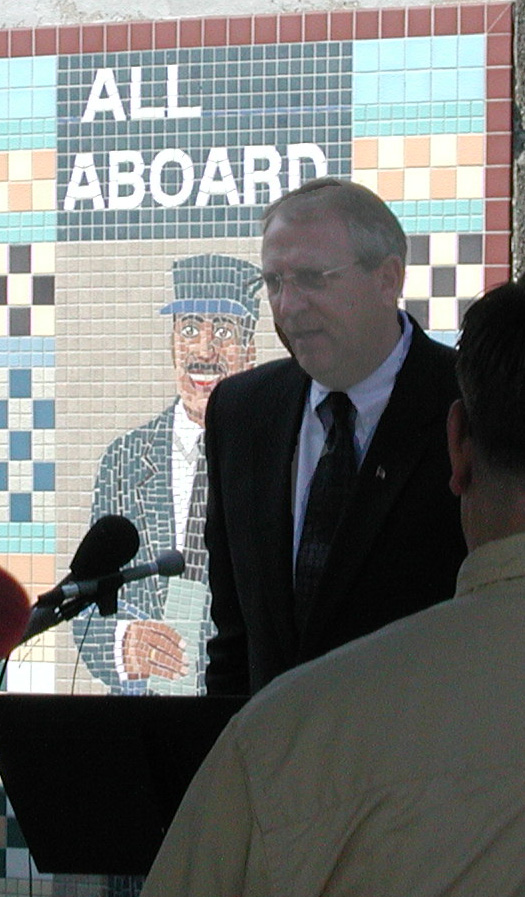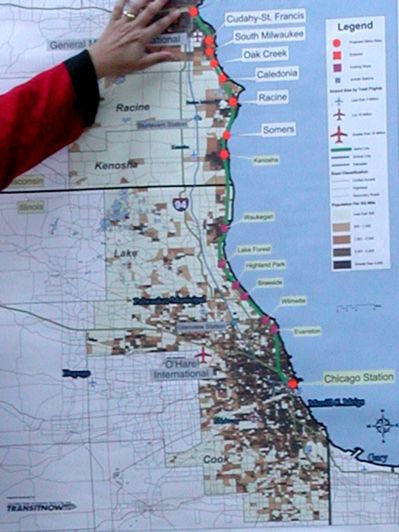We Energies Corp. has deep and sturdy roots in SE Wisonsin and in the Kenosha area, and its WisPark subsidiary is as vital among business interests as it was upon its formation in the mid-1980s, which followed successful leadership by state Senator Joe Andrea to legislate authority allowing new business endeavors by the state's proven executives and managers of electric utilities.
 WisPark President Jerold Franke spoke first on behalf of the business community, stressing the necessity for increasing north-south travel infrastructure and a corollary for that increased capacity: it must not rely entirely on more I-94 lanes.
WisPark President Jerold Franke spoke first on behalf of the business community, stressing the necessity for increasing north-south travel infrastructure and a corollary for that increased capacity: it must not rely entirely on more I-94 lanes.
Kenosha was a vibrant community fifteen years ago when WisPark began, Franke said, located between two major economic centers -- Milwaukee and Chicago.
Today, Kenosha is a major economic center, Franke noted, and connecting to other centers with K-R-M and existing Metra trains to Chicago must be a top priority. The truncated commuter rail line that now ends at Kenosha "makes no sense," Mr. Franke advised. "Kenosha is the center of this growth dynamic that is taking place. Having it continue on to Racine and Milwaukee will be in the overall best interest of the entire Chicago-Milwaukee corridor, and growing someday to Madison."
 K-R-M trains will continue north to Milwaukee (under Mrs. Potter's finger), 33 miles beyond Kenosha along this Union Pacific freight route, formerly a principal Chicago & Northwestern Rwy. mainline for passenger trains, until 1971.
K-R-M trains will continue north to Milwaukee (under Mrs. Potter's finger), 33 miles beyond Kenosha along this Union Pacific freight route, formerly a principal Chicago & Northwestern Rwy. mainline for passenger trains, until 1971.
Stations were designated during a 1996-1998 feasibility study with specific attention to sufficient distance between them to efficiently utilize commuter rail's capacity for conveying as many as 800 riders in a single train.
Bus service complements commuter rail with fewer passengers per vehicle (typically 40-60), while readily making frequent stops, sometimes just one- or two-tenths of a mile apart. In particular, buses will become integral to K-R-M commuting as densely built areas generate commuters switching from cars to public transit.
K-R-M stations will be separated by 3-8 miles, and population along the entire corridor is sufficiently numerous to predict daily ridership at 5,000 or more.
Visit TransitNOW webpage about K-R-M commuter trains
Visit Sierra Club website (Click on Wisconsin in map for list of rated projects)
Return to KenRail home page